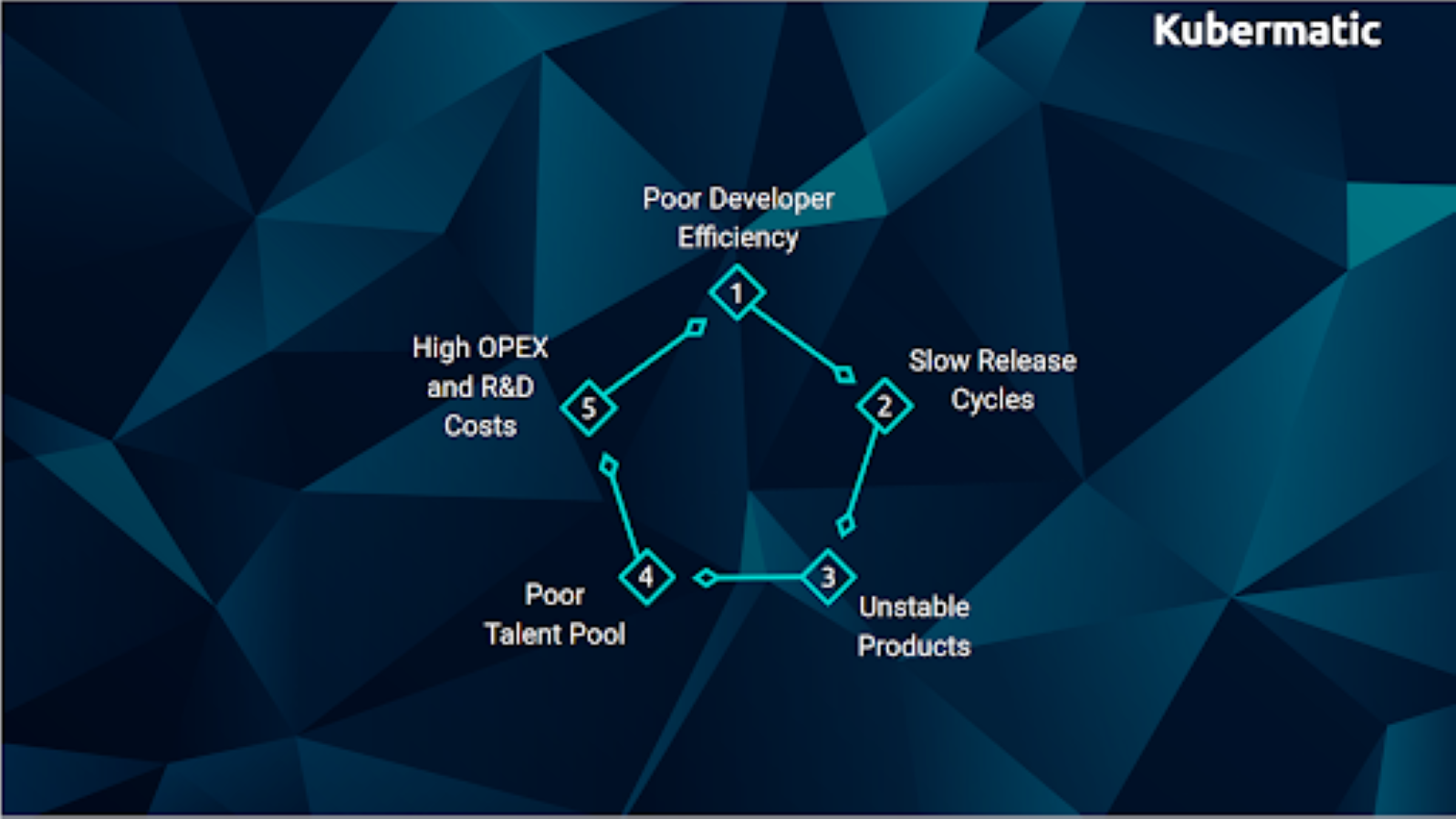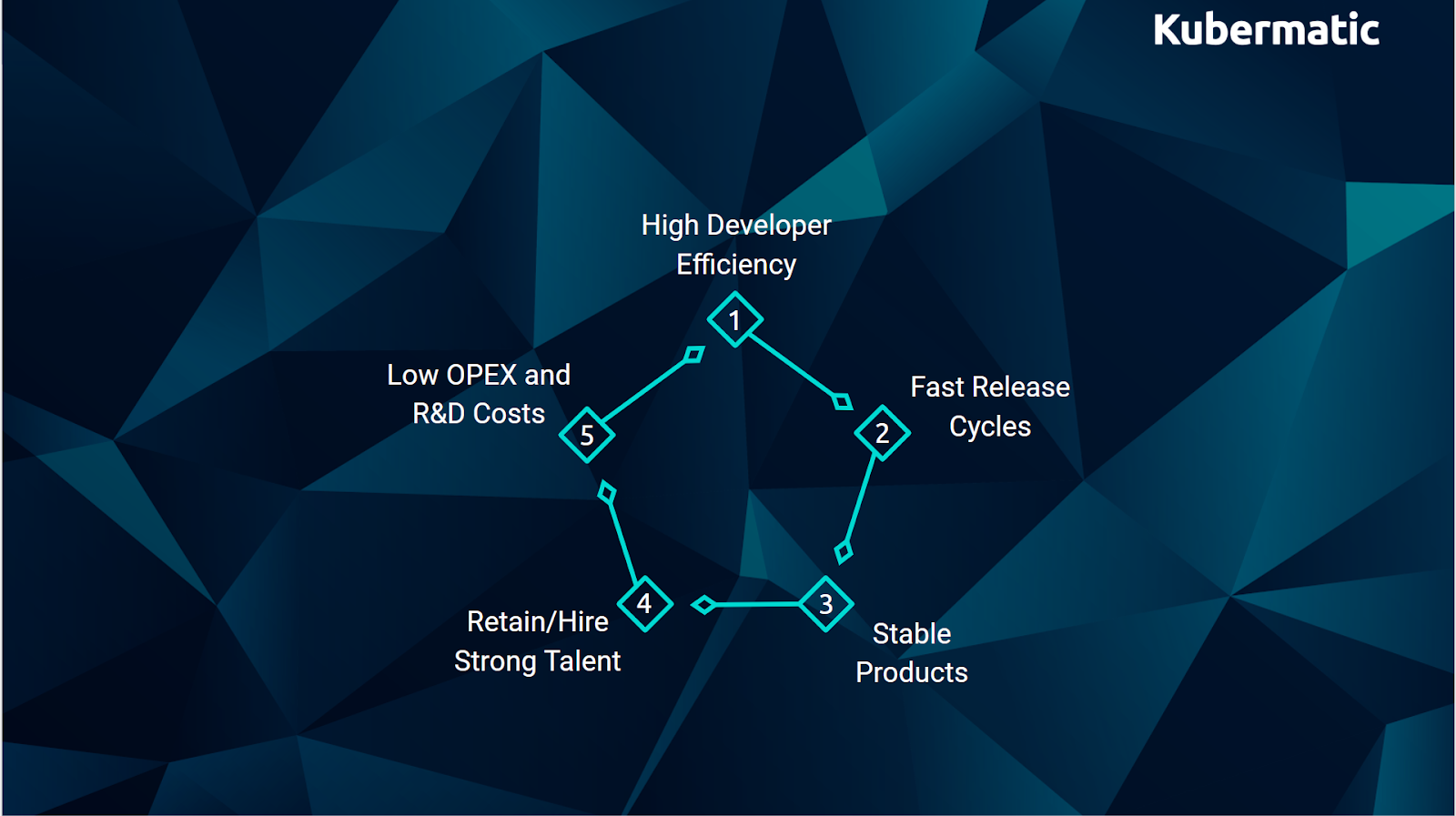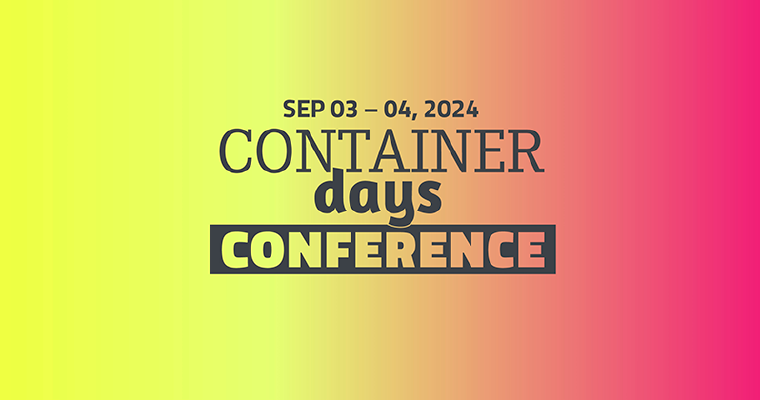It’s been breaking news over the past few weeks: For the second quarter of 2020, Zoom reported an incredible 355% revenue growth compared to the previous year.
If there was any more proof needed that the pandemic has been fueling digital transformation faster than ever, this it checked off.
I predict this development to split businesses into two groups:
- Those who successfully adapt their transformational speed to the new circumstances
- and those who won’t.
Ultimately, that will reinforce the gap between digital leaders and digital laggards for good. Covid-19 has become a forcing function for cloud native to truly enhance innovation, user experience, and developer productivity while steadily decreasing infrastructure and operational cost.
Before we dive deeper into that, let’s first take one step back: Traditionally, IT departments were used to build software based on their projections of future customer needs and tied to the pace their operations could deliver. This often resulted in unstable (or even unwanted) products and ultimately high OPEX and R&D costs, sluggish innovation, and a poor talent pool. Or as we like to call it, a cycle of inefficiency.

Sure, we have seen many businesses adopt cloud native and DevOps approaches over the past few years already. However, the pandemic has made it even more critical to escape this vicious cycle. With the explosion in the number of remote devices and remote customers, having scalable systems and optimal user experience (internal and external) have become vital for continued businesses success.
This is exactly what cloud native technologies bring to the table:
- Developing applications that are flexible to quickly respond to changing circumstances and new requirements
- Experimenting with new ideas and features that incrementally drive innovation (remember how quickly Lieferando released a new Pickup feature after the restaurants closed down?)
- Building loosely coupled microservices that are much more resilient and minimize downtime
- Moving away from always-on infrastructure to infrastructure that scales on demand and is billed and paid per use
In summary: entering a cycle of efficiency that is able to support your business goals and ensure future competitiveness.

Admittedly, in the past, cloud native has been somewhat limited to the public cloud and containerized applications, preventing many businesses from embarking on their cloud native journey. Why and how would you want to get rid of your Virtual Machines, your legacy applications or your data centers?
Luckily (and in time for a changed world) these reserves do not hold true anymore: The community has developed effective tooling that brings the benefits of cloud native to any possible workload and infrastructure.
The KubeVirt project, for example, addresses the needs of teams that want to adopt Kubernetes but have VM-based workloads that cannot be easily containerized. Platforms like our Kubermatic Kubernetes Platform automate the management of thousands of Kubernetes clusters across any infrastructure: from your data center, to any public cloud, and even up to edge and IoT environments.
The cloud native ecosystem is ready for enterprise adoption. Now, businesses need to get ready too, if they want to emerge from this crisis as digital leaders and not as digital laggards.
Learn More
Join our Webinar: Why You Really Should Go Cloud Native During the Pandemic on September 16 at 6 PM CEST (Watch here)
Check out our recording on how to easily set up your own cloud native platform across any infrastructure with open source Kubermatic Kubernetes Platform (View here)




